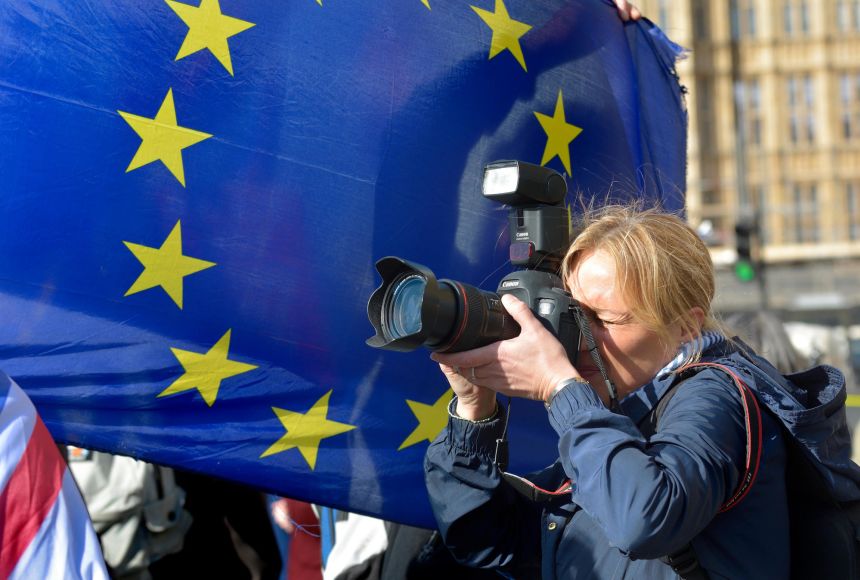ENCYCLOPEDIC ENTRY
ENCYCLOPEDIC ENTRY
Photography
Photography
Photography is the art of images captured by light and energy. The power of photography to tell a story can be done with a single image or through a series of images.
Grades
5 - 8
Subjects
Storytelling, Photography
Image
Photographer Captures Brexit Protest
Photographs have become the medium of choice for documenting events around the world. Here, a photographer shooting a Brexit protest in front of an European Union flag in London, England, in March 2019.
Photograph by PjrNews

Media Credits
The audio, illustrations, photos, and videos are credited beneath the media asset, except for promotional images, which generally link to another page that contains the media credit. The Rights Holder for media is the person or group credited.
Director
Author
Production Managers
Program Specialists
Producer
Intern
other
Last Updated
April 23, 2024
For information on user permissions, please read our Terms of Service. If you have questions about how to cite anything on our website in your project or classroom presentation, please contact your teacher. They will best know the preferred format. When you reach out to them, you will need the page title, URL, and the date you accessed the resource.
Media
If a media asset is downloadable, a download button appears in the corner of the media viewer. If no button appears, you cannot download or save the media.
Text
Text on this page is printable and can be used according to our Terms of Service.
Interactives
Any interactives on this page can only be played while you are visiting our website. You cannot download interactives.